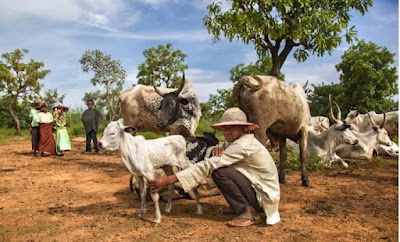Common Calving Mistakes to Avoid
A lot of calves (offspring of cattle) are increasingly dying of preventable deaths could be prevented through better or enhanced management practices. The primary reasons that calves die are oxygen deprivation or poor handling during calving.
When calves are deprived of oxygen, they become weaker and would not be able to absorb colostrum. The implication of this is that these calves would have complications, including pneumonia and scours.
Furthermore, poor handling can result in an increased risk of vaginal or cervical tears and downer cow, and this further result in reduced fertility and infection.
 |
| 7 Most Common Calving Mistakes to Avoid |
A downer cow syndrome is a condition that occurs in cattle where a cow is unable to rise or get up for more than 24 hours.
To avoid the loss of your newborn calves and financial loss, avoid these common mistakes cattle farmers make that can lead to calf deaths.
- Helping the cow too early and not waiting for the dilation of the cervix.
- Serving a heifer or cow to a bigger bull, resulting in a large calf for the cow’s size.
- Improper use of the calving jack, which causes calf spinal and rib fractures, as well as stress to the dam and calf.
- Wrong body condition score. Generally, a fat cow will need additional help at calving. Likewise, a thin cow will struggle for energy during calving.
- Having a High stocking rate in calving pens makes it very stressful for cows to calve properly and easily.
- Putting newborn calves over gates to clear their lungs is a no-no. It results in abdominal hemorrhaging.
- Not reaching up to 85% of adult body weight at first calving.
Tags:
Dairy Farming
